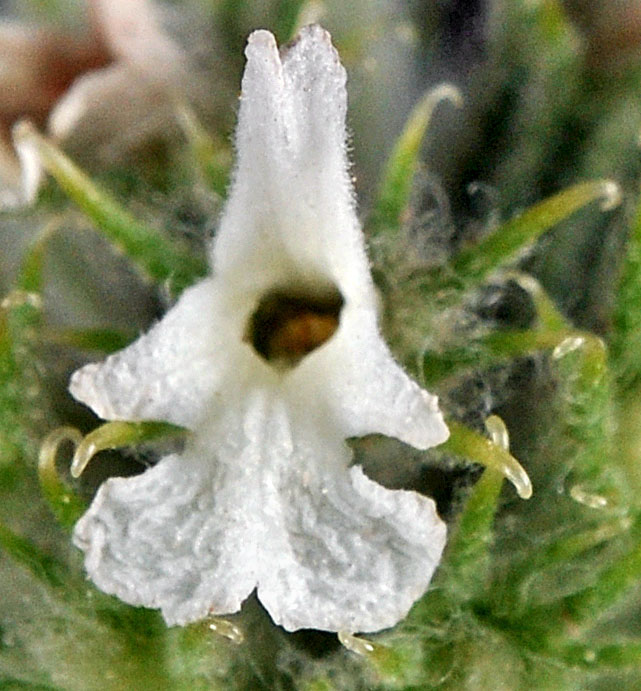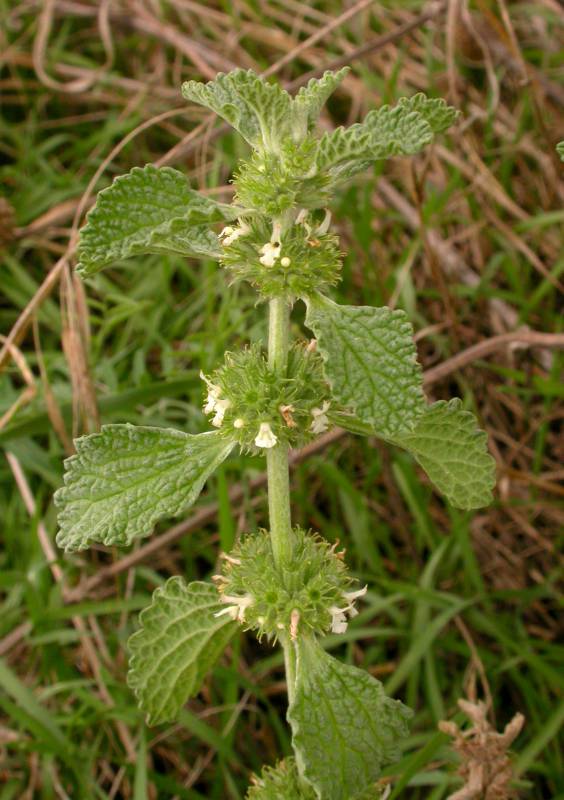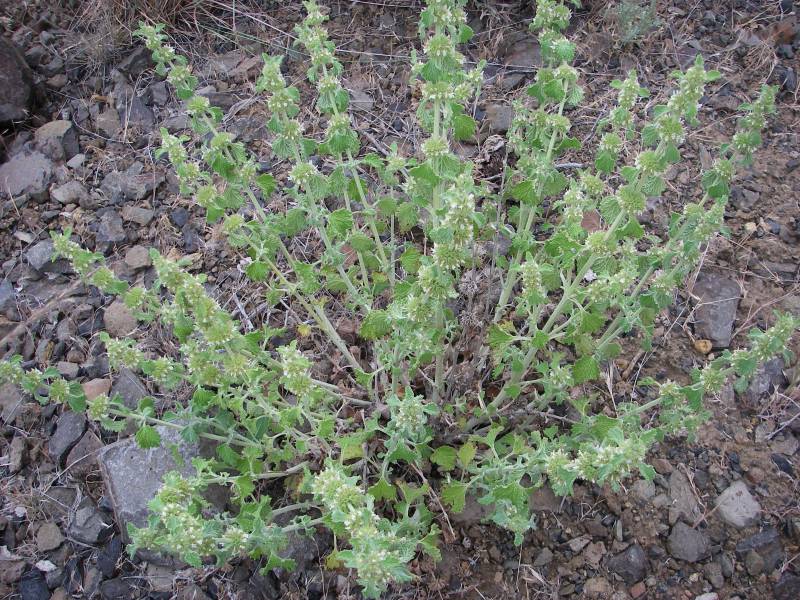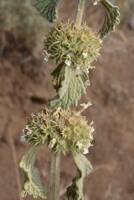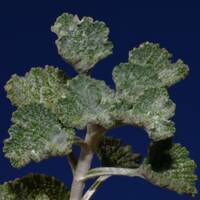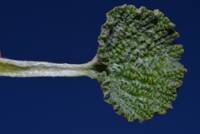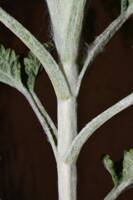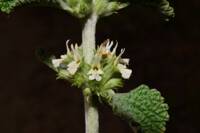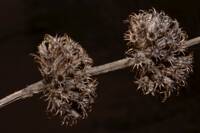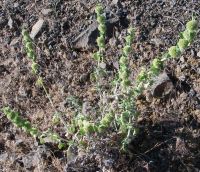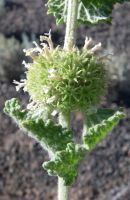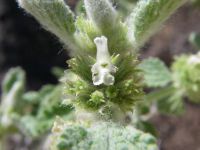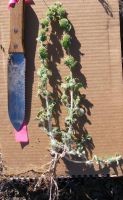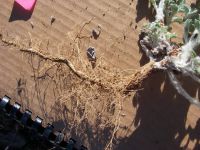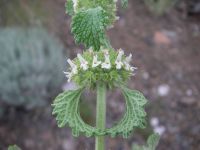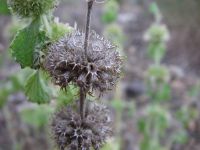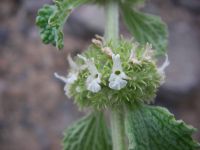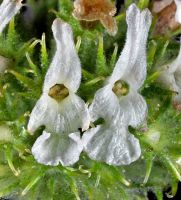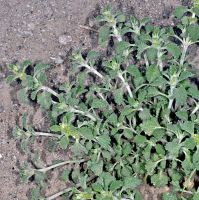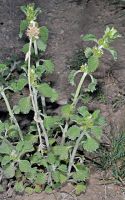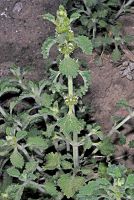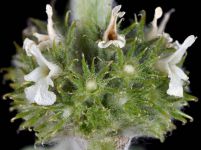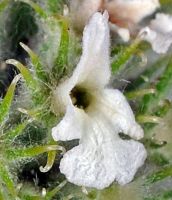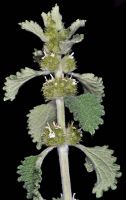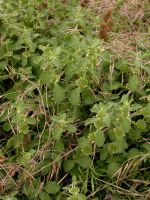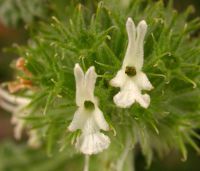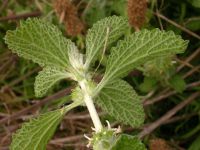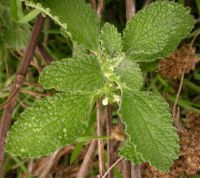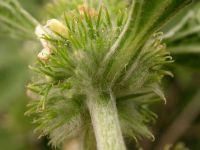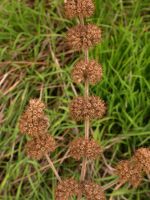Distribution: Occurring on both sides of the Cascades crest in Washington Alaska to California, east across most of North America to the Atlantic Coast.
Habitat: Fields, roadsides, thickets, wastelots, and other disturbed areas.
Flowers: June-October
Origin: Introduced from Eurasia
Growth Duration: Perennial
Conservation Status: Not of concern
White-wooly perennial from a stout taproot, the several stems nearly prostrate to sub-erect, 3-10 dm. tall.
Leaves opposite, all cauline, only slightly reduced upward, petiolate, the blades broadly elliptic to rotund-ovate, 2-5.5 cm. long and nearly as wide, with rounded teeth.
Flowers in dense whorls in the axils of normal leaves; calyx with stellate hairs, and a ring of long hairs in the throat; calyx tube 4-5 mm. long, with 10 narrow teeth nearly as long, their spiny tips recurved; corolla whitish, 2-lipped, the upper erect and narrowly 2-lobed, the lower spreading and 3-lobed, the central lobe broadly rounded; stamens 4, the lower pair longer, included in the corolla tube.
4 nutlets.
Publication: Sp. Pl. 2: 583. 1753.
PNW Herbaria: Specimen records of Marrubium vulgare in the Consortium of Pacific Northwest Herbaria database
WA Flora Checklist: Marrubium vulgare checklist entry
OregonFlora: Marrubium vulgare information
E-Flora BC: Marrubium vulgare atlas page
CalPhotos: Marrubium vulgare photos

